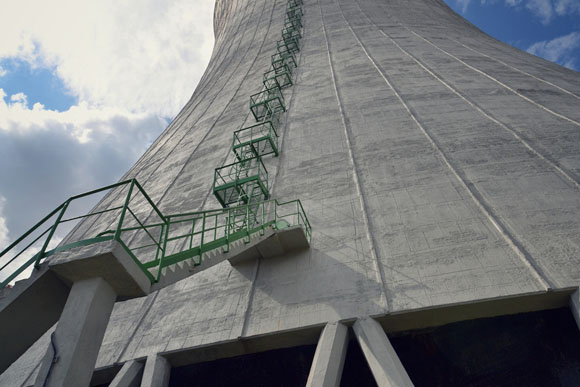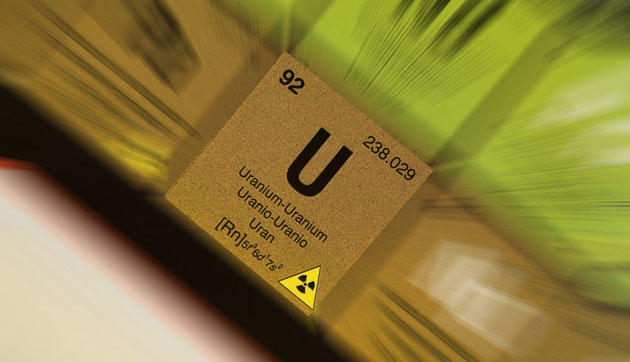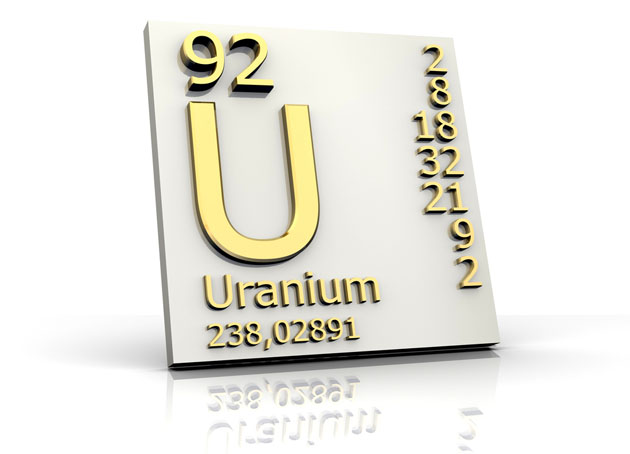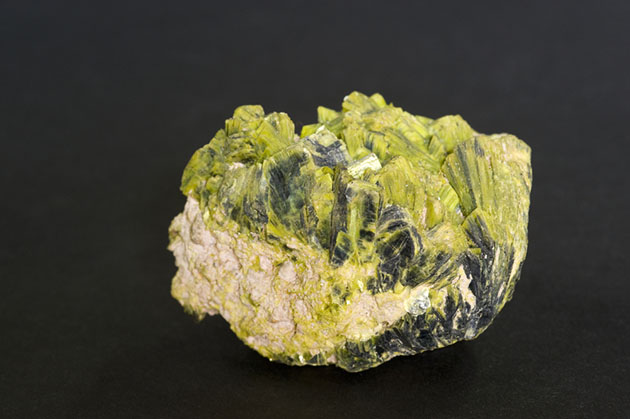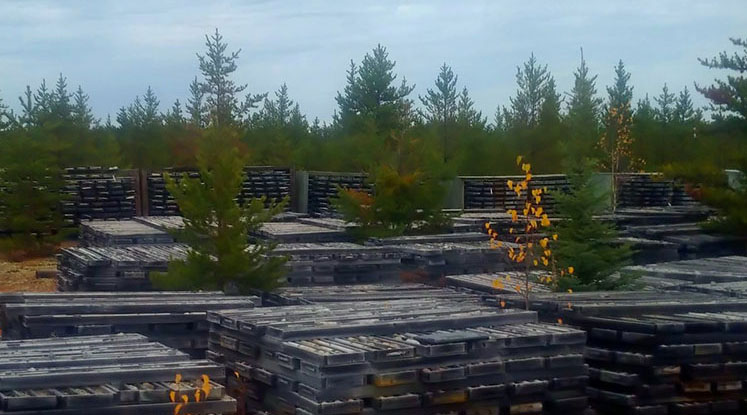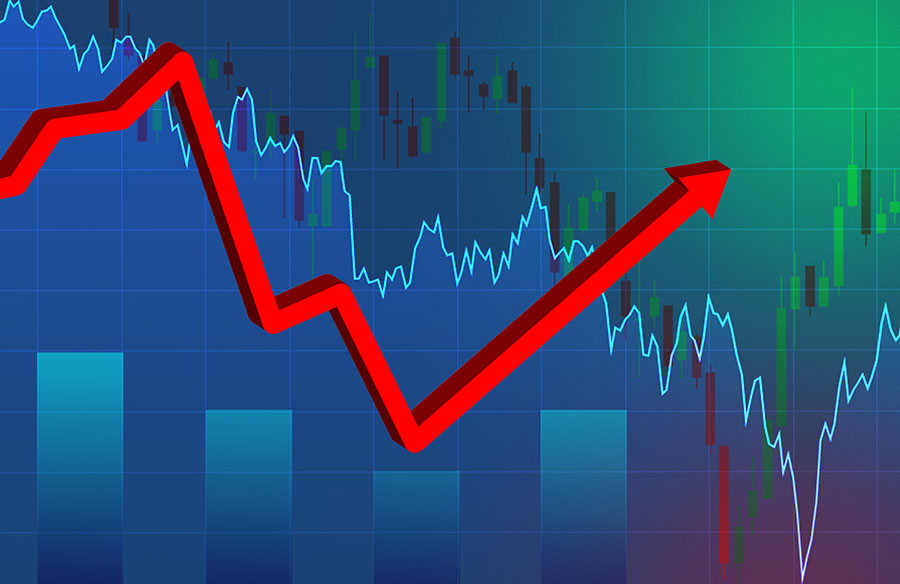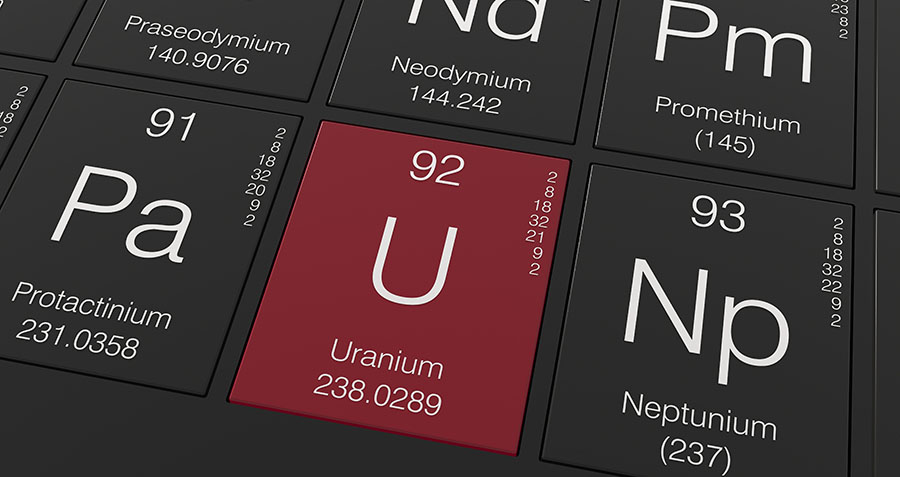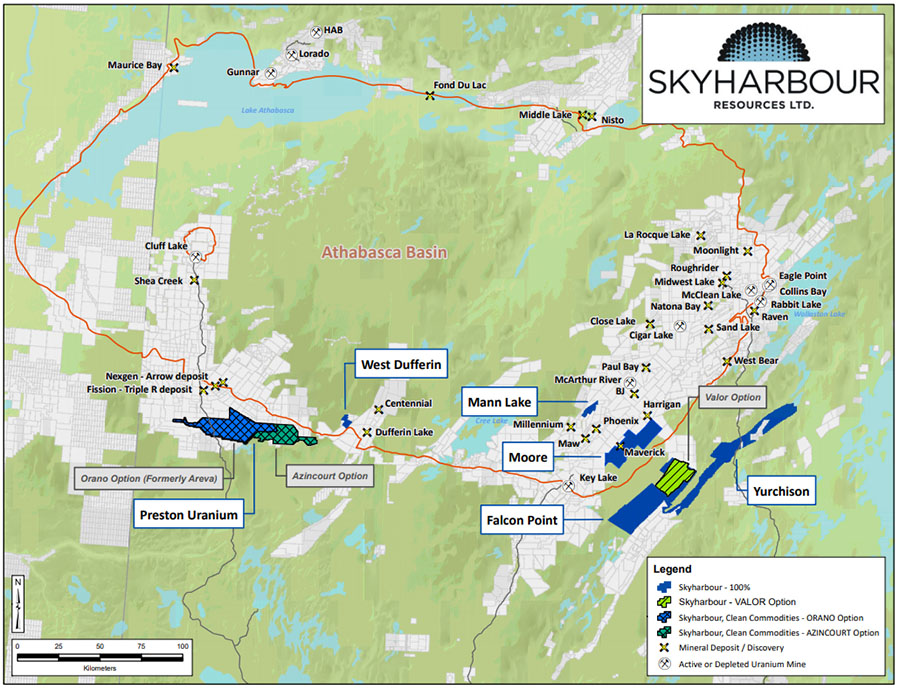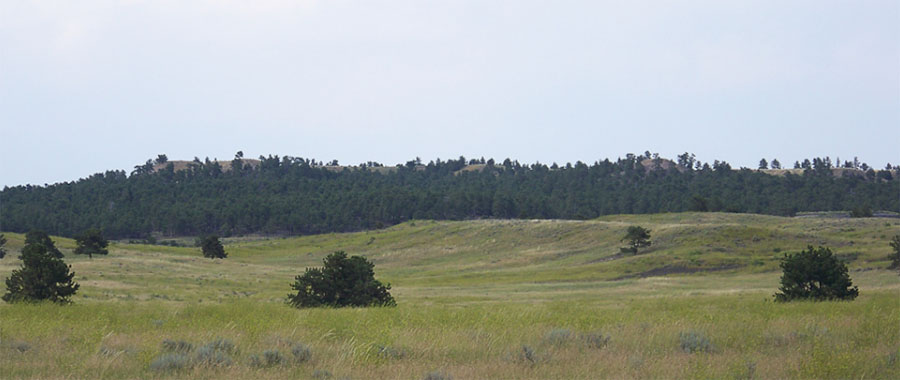TICKERS: CCO; CCJ, EFR; UUUU, FIS, , UWE; UWEFF, UUU
Rob Chang: Best Uranium Stocks to Rebound in 2011
Interview
Source: George Mack of The Energy Report (6/21/11)
 While uranium prices fell after the Japanese earthquake and tsunami, Versant Partners Analyst Rob Chang says in the long term, prices must rise due to a supply shortfall and the economic necessity of using nuclear power. In this exclusive interview with The Energy Report, Chang suggests ways to take advantage of the eventual rebound and highlights some companies that will be the first to see rising stock prices.
While uranium prices fell after the Japanese earthquake and tsunami, Versant Partners Analyst Rob Chang says in the long term, prices must rise due to a supply shortfall and the economic necessity of using nuclear power. In this exclusive interview with The Energy Report, Chang suggests ways to take advantage of the eventual rebound and highlights some companies that will be the first to see rising stock prices.
The Energy Report: How did investors initially react to the earthquake and tsunami in Japan, and how have attitudes changed since?
Rob Chang: Many hit the sell button on uranium after the disaster. The uranium spot price prior to Fukushima was around $66.50/lb. In the three days following, it declined 30%, to as low as $47/lb. However, it didn't stay that low as it bounced back by the end of the week, finishing only about 9% lower, at $60/lb., which was a good sign. It later drifted to a low of about $55.25/lb. in early May and is now trading at $55.00/lb.—showing some strength.
Switching to the long-term price, which better indicates how utilities see things, it was around $73/lb. prior to the disaster. After the first post-Fukushima price update, it only declined $1/lb., a fantastic sign that the utilities and the producers didn't see much of a long-term impact. It has declined a little since then—and is currently down 7%, to $68/lb.
Uranium equities, on the other hand, declined about 30% following Fukushima and, despite attempts at rallying, their prices have drifted lower. It appears that investors have shifted their focus away from the fundamentals, which drove the market for the previous nine months, and now employ more of a "wait and see" approach while countries around the world reevaluate their nuclear programs. It is interesting to note, however, that despite the 30% drop from the peak before the tsunami, uranium equities are still trading higher than at this time last year. Things are still positive from that perspective.
TER: Very interesting point. Germany has announced a plan to scrap its nuclear power programs by the year 2022; Chancellor Merkel says this is just the beginning of a fundamental shift in policy. What is your take?
RC: I am skeptical. A 10-year time frame to phase out 25% of Germany's power generation seems aggressive, and Merkel's plans lack clarity. They say the power will be replaced by gas and coal plants in the short term, and then by renewable sources. But there are a lot of question marks. For example, renewable sources currently make up 17% of Germany's power generation; they are expecting that to double to 35% by 2022. That's pretty aggressive.
Economically, the cost would be ridiculous; just to phase out 25% of the world's fourth-largest economy's power generation and replace it with gas and coal, and then buy renewables, would require a vast amount of money in the form of taxes and/or tariffs. That is hard while we are still in a global recession or downturn. At the same time, even if they were able to find the money, where are they going to build new power plants? No one will want them in their backyards. An additional layer of regulation and political hand-holding would be needed; to attempt to do all this in 10 years is optimistic at best.
TER: But won't this be an overall negative for nuclear power?
RC: It could be if they succeed. However, Germany only accounts for about 4% of global nuclear power generation. So, over the long term, it might not make that much of an impact.
TER: If Germany has taken this attitude toward nuclear power, does it open the door for other countries to think that way?
RC: It does, because Germany is a large economy and one of the more powerful industrial nations. However, outside of Switzerland and Italy, it doesn't seem like many other countries are moving in the same direction. The driver behind the change in Germany is the fact that Merkel's political party is losing power. They know they need some radical changes to hold onto it, so, instead of a gradual phase out, they've adopted a more drastic one, hoping to grab votes.
TER: Let's move back to Japan. We know from unfortunate past experience that Japan has been willing to make dramatic foreign policy changes because of catastrophes, for instance at the end of World War II. Could they be rethinking their policy on nuclear power?
RC: They could be—every country is rethinking their policies—but the economics don't work well for phasing out nuclear power in Japan. Currently, 30% of Japanese power comes from nuclear generation. Studies indicate that it would cost $60–$150B to replace that with coal or liquefied natural gas (LNG), and another $17–$27B in import costs for coal and LNG. That would be an extremely expensive endeavor in an environment where they need to rebuild parts of their country—and again, the global economy isn't strong.
In order for renewables like solar power to replace nuclear, the country would have to increase capacity about 190 times from where it is right now, costing just short of $700B in capital expenditures. In terms of wind power, some estimate they would need a hundredfold increase, costing $330B. Some might suggest geothermal, but that's not possible; it would take 65 GW (gigawatts) of geothermal power at a cost of more than $200B to replace the nuclear power being generated, although the country is currently only capable of producing 23.5 GW.
TER: So, you are still bullish overall on nuclear power, and therefore uranium mining.
RC: Absolutely.
TER: What are the growth drivers for the uranium industry?
RC: Fukushima hasn't really changed those. Current demand for uranium is around 180 Mlb. from the 440 operating reactors around the world. Meanwhile, the supply from mines is around 135 Mlb. That leaves a 45 Mlb. shortfall, currently mitigated by the Highly Enriched Uranium (HEU) agreement, which downgrades Russia's nuclear warheads and redistributes the material. The agreement is set to expire in 2013, and from the reports we're getting the Russians aren't planning to downblend any more after that. If that is true, they will not be reprocessing their warheads after that date for themselves either, so that supply is disappearing.
Meanwhile, 61 reactors are under construction, already financed and moving forward. Another 25 Mlb. of uranium will be required to power these new reactors, which use approximately 400,000 lb. each. On top of that, 158 more nuclear reactors are planned, and 326 proposed. Even if only half are built, that's another significant demand for uranium when we already have a 45 Mlb. shortfall. The growth drivers for uranium are phenomenal.
TER: What does this shortage bode for the price of uranium?
RC: It has nowhere to go but up. For the marginal cost of production, you're looking at a minimum of $45–$50/lb. If you were to add on the capital expenditures required to build out these lower grade, probably deeper deposits that generally cost more to build, you are looking at a minimum of $70/lb. just to support the build-ups. And since you have such a supply shortage relative to demand, these new mines need to be built in order to power the world. For that reason, the uranium spot price must increase to $70/lb. or higher going forward.
TER: On a long-term basis—let's say 10 years—will the events at Fukushima have slowed the growth of the uranium industry?
RC: Overall, I don't think Fukushima has made a significant impact. Cameco Corp. (TSX:CCO; NYSE:CCJ) analysis predicts only a 4% reduction over the next 10years in uranium demand because of Fukushima. That is not very significant, especially when we have massive shortfall of supply relative to demand right now.
There will be some impact over the decade, but I think the actual impact on the markets will be short lived. It's tough to say how long it will take; it depends on the actual impact of Fukushima, which is not yet fully known. There are still ongoing efforts to fix everything there.
A parallel could be made to last year's BP oil spill. Around that time, there was a lot of negative sentiment toward oil, but now, any oil-related investment is significantly higher than it was before. Similarly, uranium could be off and running by next year. That could be optimistic, but it looks and feels like it could end up in the same situation.
TER: In a basket of individual uranium stocks, the one-year total returns are still phenomenal, anywhere from 30% up to 150% up over the past 52 weeks. But over the past three months, some of these stocks have been cut in half. Is there a bright side? Are we looking at deep value currently in stocks?
RC: There is definite value. The uranium stocks were all on an upward trend, as you noted. The uranium price itself needs to go higher, and these stocks will go with it. So yes, there is significant value in these stocks; we just need a catalyst, more interest or at least recent events to blow over for these stocks to reignite.
TER: How can investors take advantage of these lower share prices?
RC: Investors looking to take advantage of the initial snap-back once the uranium price starts to aggressively pull back up would want to be in the producers, such as Cameco or Uranium One Inc. (TSX:UUU). Cameco is the bellwether in the uranium space, and any investor looking there will generally look at Cameco first. Many large institutions use it as their key uranium holding, so it would be one of the first to turn around when the market starts heating up.
I also like Uranium One, because it is the most exposed to the spot price, and once that starts climbing, UUU will see most of the benefit. Other companies that will experience gains would be near-term producers, such as Energy Fuels Inc. (TSX:EFR). We have a "buy" rating and a $1.30 target price on it. We like this company because it's building a 500 ton/day mill located within 180 miles of 23 permitted uranium mines with at least 7 Mlb. of uranium in the area around the Colorado Plateau. The company also owns two turnkey mines with at least 4.5 Mlb. of uranium; both can be turned on within a year, probably in nine months or less. So we really like Energy Fuels.
Looking at some more exploration and growth-oriented companies, we also like Kivalliq Energy Corp. (TSX.V:KIV), which we also cover as a speculative buy with a target price of $1.00. Kivalliq Energy owns the Lac Cinquante deposit in Nunavut, which is the highest grade uranium deposit outside the Athabasca Basin. The average grade is currently 0.79% U3O8. When you compare that with the global ex-Athabasca median of 0.08%, it's a phenomenally high grade. When you're in mining, grade is king.
Currently, it has an NI 43-101 compliant inferred resource of 14.2 Mlb., but it has lots of room to grow. The NI 43-101 resource estimate only covers a tiny portion of the total land package that Kivalliq owns and there are several highly prospective areas. On top of that, they also have a strong relationship with the local Inuit group, so we're very positive on Kivalliq.
Another company that we would like to talk about is Fission Energy Corp. (TSX.V:FIS; OTCQX:FSSIF). We have a speculative buy on that one, with no target price. Fission Energy has an enviable mix of location, high-grade resource potential and opportunity. It is located in the prolific Athabasca Basin, which has a 35-year history of uranium production and excellent infrastructure. Fission's Waterbury Lake property is located adjacent to Hathor Exploration’s Roughrider deposit and AREVA/Denison Mines' Midwest project—a uranium camp that already hosts over 110 Mlbs. of U3O8. Being adjacent to Hathor is part of this company's selling point. While it does not have an NI 43-101 compliant resource at the Waterbury Lake project, drilling results there have produced some fantastic assays of over 1% uranium and some as high as 6%.
Waterbury Lake itself has five targets, all apparently highly prospective, along the Discovery Bay Corridor, which is an east–west string of pearls of mineralization that includes all five of Fission's prospects, as well as the adjacent Roughrider and Roughrider East on Hathor's property. It looks like investors in Fission also get a free option on some other Fission properties that are highly prospective as well.
Fission also has Dieter Lake in Quebec, with an NI 43-101 compliant resource of 24.4 Mlb., and a very prospective piece of property in Macusani, Peru, a uranium district that is heating up right now.
TER: You have no target price assigned to Fission yet, but a speculative buy would imply multiples at the current market price. Have you avoided assigning a target price because there's no NI 43-101 on it?
RC: Yes, that's the primary reason. We made an estimate, and in our research report, we note a valuation halfway that would give it around $0.90 if we used a base case assumption. Assuming they have 17 Mlb. of uranium, if we use some relative valuation metrics and add the other pieces of the company together, it comes to around $0.90. However, that estimate would be unfair because we don't know if 17 Mlb. is accurate. On top of that, that resource estimate would only be for J–Zone, one of the five targets within Waterbury Lake. Four other prospective areas could have mineralization that would add further value. In addition, an estimate wouldn't assign value to any of the other projects outside of Dieter Lake, which we did add to the number because it has an NI 43-101 resource estimate. There are multiple moving parts—too many assumptions—for us to settle on a number we think would be fair.
TER: So your growth hypothesis is based on the string of pearls extending from the Hathor mines projects?
RC: The five Fission properties look almost exactly in line with Hathor's Roughrider and Roughrider East; they are dots along that line. All five could potentially be something. The fifth, J-Zone East, is likely to be an extension of Roughrider, as it shares the border. The other four appear to be highly prospective and, like J-Zone, each could potentially be 17 Mlb. or more. However, it's too early to say. But looking at the mineralization of J-Zone, J-Zone East, Roughrider and Roughrider East, the latter for which Hathor recently came out with some really impressive numbers, it seems there is an entire string of pearls formation of perhaps 20–30 Mlb. pods within hundreds of meters of each other.
TER: Going back to Energy Fuels: you dropped your target price to $1.30, but it still implies a significant 200% return from current levels. When could investors expect that kind of return?
RC: The short answer is when the uranium market comes back into favor. Energy Fuels is an excellent value, but if money is not going into the sector, Energy Fuels rides with it; thus it depends on when the overall sector gets better. I would point investors toward Energy Fuels because they have short-term production, and with their mill, they will have a strong position within the region.
TER: Going to Kivalliq: you noted that it was trading at roughly half of its current peer group enterprise value/lb. level. Why is it trading at such a discount in an already discounted market?
RC: It's not as well known as other companies. Kivalliq just released its NI 43-101 on Lac Cinquante last year; others may have had their resource estimates longer, so they are better known. When some other analysts talk about the highest-grade uranium deposits outside of the Athabasca Basin, I tell them about Kivalliq. Some don't even know the name yet. The company has some fantastic grades for a deposit located outside of the Athabasca Basin; it's a story that just needs to be told.
TER: Any other stories you wanted to mention?
RC: U3O8 Corp. (TSX.V:UWE) continues to impress. U308 has projects in Colombia, Guyana and Argentina. The Colombian project is its best, with a suite of metals—uranium, phosphate and others—and that looks impressive. We look forward to seeing more results, but it looks nice there.
A few weeks ago, we visited the Argentinean site, a low-grade uranium project we initially thought might not be very prospective. However, given the size of the rocks in the material, it appears the grade could be significantly improved by a simple screening process similar to what is done at Langer Heinrich in Namibia. Therefore it raises the likelihood that it is a viable, economically sound project. It really depends on how many pounds they find in the ground there.
TER: Rob, the four stocks you've talked about today have a market cap of $40–$57 million, and it does not take a lot of investment capital to move microcap stocks. That makes these very interesting stories. Thank you.
Versant Partners Analyst Rob Chang has extensive financial markets experience dating back to 1995. He was a member of a five-person team running a multi-strategy hedge fund, a base metals research associate at BMO Capital Markets, a manager of resource funds at a boutique investment management company and an equity analyst covering the global mining sector at an independent investment bank. Rob has an MBA from the Rotman School of Management at the University of Toronto and holds a Canadian Investment Manager designation.
Want to read more exclusive Energy Report interviews like this? Sign up for our free e-newsletter, and you'll learn when new articles have been published. To see a list of recent interviews with industry analysts and commentators, visit our Exclusive Interviews page.
DISCLOSURE:
1) George Mack of The Energy Report conducted this interview. He personally and/or his family own the following companies mentioned in this interview: None.
2) The following companies mentioned are sponsors of The Energy Report: Energy Fuels and Fission Energy.
3) Rob Chang: I personally and/or my family own shares of the following companies mentioned in this interview: None. I personally and/or my family am paid by the following companies mentioned in this interview: None.
Rob Chang: Many hit the sell button on uranium after the disaster. The uranium spot price prior to Fukushima was around $66.50/lb. In the three days following, it declined 30%, to as low as $47/lb. However, it didn't stay that low as it bounced back by the end of the week, finishing only about 9% lower, at $60/lb., which was a good sign. It later drifted to a low of about $55.25/lb. in early May and is now trading at $55.00/lb.—showing some strength.
Switching to the long-term price, which better indicates how utilities see things, it was around $73/lb. prior to the disaster. After the first post-Fukushima price update, it only declined $1/lb., a fantastic sign that the utilities and the producers didn't see much of a long-term impact. It has declined a little since then—and is currently down 7%, to $68/lb.
Uranium equities, on the other hand, declined about 30% following Fukushima and, despite attempts at rallying, their prices have drifted lower. It appears that investors have shifted their focus away from the fundamentals, which drove the market for the previous nine months, and now employ more of a "wait and see" approach while countries around the world reevaluate their nuclear programs. It is interesting to note, however, that despite the 30% drop from the peak before the tsunami, uranium equities are still trading higher than at this time last year. Things are still positive from that perspective.
TER: Very interesting point. Germany has announced a plan to scrap its nuclear power programs by the year 2022; Chancellor Merkel says this is just the beginning of a fundamental shift in policy. What is your take?
RC: I am skeptical. A 10-year time frame to phase out 25% of Germany's power generation seems aggressive, and Merkel's plans lack clarity. They say the power will be replaced by gas and coal plants in the short term, and then by renewable sources. But there are a lot of question marks. For example, renewable sources currently make up 17% of Germany's power generation; they are expecting that to double to 35% by 2022. That's pretty aggressive.
Economically, the cost would be ridiculous; just to phase out 25% of the world's fourth-largest economy's power generation and replace it with gas and coal, and then buy renewables, would require a vast amount of money in the form of taxes and/or tariffs. That is hard while we are still in a global recession or downturn. At the same time, even if they were able to find the money, where are they going to build new power plants? No one will want them in their backyards. An additional layer of regulation and political hand-holding would be needed; to attempt to do all this in 10 years is optimistic at best.
TER: But won't this be an overall negative for nuclear power?
RC: It could be if they succeed. However, Germany only accounts for about 4% of global nuclear power generation. So, over the long term, it might not make that much of an impact.
TER: If Germany has taken this attitude toward nuclear power, does it open the door for other countries to think that way?
RC: It does, because Germany is a large economy and one of the more powerful industrial nations. However, outside of Switzerland and Italy, it doesn't seem like many other countries are moving in the same direction. The driver behind the change in Germany is the fact that Merkel's political party is losing power. They know they need some radical changes to hold onto it, so, instead of a gradual phase out, they've adopted a more drastic one, hoping to grab votes.
TER: Let's move back to Japan. We know from unfortunate past experience that Japan has been willing to make dramatic foreign policy changes because of catastrophes, for instance at the end of World War II. Could they be rethinking their policy on nuclear power?
RC: They could be—every country is rethinking their policies—but the economics don't work well for phasing out nuclear power in Japan. Currently, 30% of Japanese power comes from nuclear generation. Studies indicate that it would cost $60–$150B to replace that with coal or liquefied natural gas (LNG), and another $17–$27B in import costs for coal and LNG. That would be an extremely expensive endeavor in an environment where they need to rebuild parts of their country—and again, the global economy isn't strong.
In order for renewables like solar power to replace nuclear, the country would have to increase capacity about 190 times from where it is right now, costing just short of $700B in capital expenditures. In terms of wind power, some estimate they would need a hundredfold increase, costing $330B. Some might suggest geothermal, but that's not possible; it would take 65 GW (gigawatts) of geothermal power at a cost of more than $200B to replace the nuclear power being generated, although the country is currently only capable of producing 23.5 GW.
TER: So, you are still bullish overall on nuclear power, and therefore uranium mining.
RC: Absolutely.
TER: What are the growth drivers for the uranium industry?
RC: Fukushima hasn't really changed those. Current demand for uranium is around 180 Mlb. from the 440 operating reactors around the world. Meanwhile, the supply from mines is around 135 Mlb. That leaves a 45 Mlb. shortfall, currently mitigated by the Highly Enriched Uranium (HEU) agreement, which downgrades Russia's nuclear warheads and redistributes the material. The agreement is set to expire in 2013, and from the reports we're getting the Russians aren't planning to downblend any more after that. If that is true, they will not be reprocessing their warheads after that date for themselves either, so that supply is disappearing.
Meanwhile, 61 reactors are under construction, already financed and moving forward. Another 25 Mlb. of uranium will be required to power these new reactors, which use approximately 400,000 lb. each. On top of that, 158 more nuclear reactors are planned, and 326 proposed. Even if only half are built, that's another significant demand for uranium when we already have a 45 Mlb. shortfall. The growth drivers for uranium are phenomenal.
TER: What does this shortage bode for the price of uranium?
RC: It has nowhere to go but up. For the marginal cost of production, you're looking at a minimum of $45–$50/lb. If you were to add on the capital expenditures required to build out these lower grade, probably deeper deposits that generally cost more to build, you are looking at a minimum of $70/lb. just to support the build-ups. And since you have such a supply shortage relative to demand, these new mines need to be built in order to power the world. For that reason, the uranium spot price must increase to $70/lb. or higher going forward.
TER: On a long-term basis—let's say 10 years—will the events at Fukushima have slowed the growth of the uranium industry?
RC: Overall, I don't think Fukushima has made a significant impact. Cameco Corp. (TSX:CCO; NYSE:CCJ) analysis predicts only a 4% reduction over the next 10years in uranium demand because of Fukushima. That is not very significant, especially when we have massive shortfall of supply relative to demand right now.
There will be some impact over the decade, but I think the actual impact on the markets will be short lived. It's tough to say how long it will take; it depends on the actual impact of Fukushima, which is not yet fully known. There are still ongoing efforts to fix everything there.
A parallel could be made to last year's BP oil spill. Around that time, there was a lot of negative sentiment toward oil, but now, any oil-related investment is significantly higher than it was before. Similarly, uranium could be off and running by next year. That could be optimistic, but it looks and feels like it could end up in the same situation.
TER: In a basket of individual uranium stocks, the one-year total returns are still phenomenal, anywhere from 30% up to 150% up over the past 52 weeks. But over the past three months, some of these stocks have been cut in half. Is there a bright side? Are we looking at deep value currently in stocks?
RC: There is definite value. The uranium stocks were all on an upward trend, as you noted. The uranium price itself needs to go higher, and these stocks will go with it. So yes, there is significant value in these stocks; we just need a catalyst, more interest or at least recent events to blow over for these stocks to reignite.
TER: How can investors take advantage of these lower share prices?
RC: Investors looking to take advantage of the initial snap-back once the uranium price starts to aggressively pull back up would want to be in the producers, such as Cameco or Uranium One Inc. (TSX:UUU). Cameco is the bellwether in the uranium space, and any investor looking there will generally look at Cameco first. Many large institutions use it as their key uranium holding, so it would be one of the first to turn around when the market starts heating up.
I also like Uranium One, because it is the most exposed to the spot price, and once that starts climbing, UUU will see most of the benefit. Other companies that will experience gains would be near-term producers, such as Energy Fuels Inc. (TSX:EFR). We have a "buy" rating and a $1.30 target price on it. We like this company because it's building a 500 ton/day mill located within 180 miles of 23 permitted uranium mines with at least 7 Mlb. of uranium in the area around the Colorado Plateau. The company also owns two turnkey mines with at least 4.5 Mlb. of uranium; both can be turned on within a year, probably in nine months or less. So we really like Energy Fuels.
Looking at some more exploration and growth-oriented companies, we also like Kivalliq Energy Corp. (TSX.V:KIV), which we also cover as a speculative buy with a target price of $1.00. Kivalliq Energy owns the Lac Cinquante deposit in Nunavut, which is the highest grade uranium deposit outside the Athabasca Basin. The average grade is currently 0.79% U3O8. When you compare that with the global ex-Athabasca median of 0.08%, it's a phenomenally high grade. When you're in mining, grade is king.
Currently, it has an NI 43-101 compliant inferred resource of 14.2 Mlb., but it has lots of room to grow. The NI 43-101 resource estimate only covers a tiny portion of the total land package that Kivalliq owns and there are several highly prospective areas. On top of that, they also have a strong relationship with the local Inuit group, so we're very positive on Kivalliq.
Another company that we would like to talk about is Fission Energy Corp. (TSX.V:FIS; OTCQX:FSSIF). We have a speculative buy on that one, with no target price. Fission Energy has an enviable mix of location, high-grade resource potential and opportunity. It is located in the prolific Athabasca Basin, which has a 35-year history of uranium production and excellent infrastructure. Fission's Waterbury Lake property is located adjacent to Hathor Exploration’s Roughrider deposit and AREVA/Denison Mines' Midwest project—a uranium camp that already hosts over 110 Mlbs. of U3O8. Being adjacent to Hathor is part of this company's selling point. While it does not have an NI 43-101 compliant resource at the Waterbury Lake project, drilling results there have produced some fantastic assays of over 1% uranium and some as high as 6%.
Waterbury Lake itself has five targets, all apparently highly prospective, along the Discovery Bay Corridor, which is an east–west string of pearls of mineralization that includes all five of Fission's prospects, as well as the adjacent Roughrider and Roughrider East on Hathor's property. It looks like investors in Fission also get a free option on some other Fission properties that are highly prospective as well.
Fission also has Dieter Lake in Quebec, with an NI 43-101 compliant resource of 24.4 Mlb., and a very prospective piece of property in Macusani, Peru, a uranium district that is heating up right now.
TER: You have no target price assigned to Fission yet, but a speculative buy would imply multiples at the current market price. Have you avoided assigning a target price because there's no NI 43-101 on it?
RC: Yes, that's the primary reason. We made an estimate, and in our research report, we note a valuation halfway that would give it around $0.90 if we used a base case assumption. Assuming they have 17 Mlb. of uranium, if we use some relative valuation metrics and add the other pieces of the company together, it comes to around $0.90. However, that estimate would be unfair because we don't know if 17 Mlb. is accurate. On top of that, that resource estimate would only be for J–Zone, one of the five targets within Waterbury Lake. Four other prospective areas could have mineralization that would add further value. In addition, an estimate wouldn't assign value to any of the other projects outside of Dieter Lake, which we did add to the number because it has an NI 43-101 resource estimate. There are multiple moving parts—too many assumptions—for us to settle on a number we think would be fair.
TER: So your growth hypothesis is based on the string of pearls extending from the Hathor mines projects?
RC: The five Fission properties look almost exactly in line with Hathor's Roughrider and Roughrider East; they are dots along that line. All five could potentially be something. The fifth, J-Zone East, is likely to be an extension of Roughrider, as it shares the border. The other four appear to be highly prospective and, like J-Zone, each could potentially be 17 Mlb. or more. However, it's too early to say. But looking at the mineralization of J-Zone, J-Zone East, Roughrider and Roughrider East, the latter for which Hathor recently came out with some really impressive numbers, it seems there is an entire string of pearls formation of perhaps 20–30 Mlb. pods within hundreds of meters of each other.
TER: Going back to Energy Fuels: you dropped your target price to $1.30, but it still implies a significant 200% return from current levels. When could investors expect that kind of return?
RC: The short answer is when the uranium market comes back into favor. Energy Fuels is an excellent value, but if money is not going into the sector, Energy Fuels rides with it; thus it depends on when the overall sector gets better. I would point investors toward Energy Fuels because they have short-term production, and with their mill, they will have a strong position within the region.
TER: Going to Kivalliq: you noted that it was trading at roughly half of its current peer group enterprise value/lb. level. Why is it trading at such a discount in an already discounted market?
RC: It's not as well known as other companies. Kivalliq just released its NI 43-101 on Lac Cinquante last year; others may have had their resource estimates longer, so they are better known. When some other analysts talk about the highest-grade uranium deposits outside of the Athabasca Basin, I tell them about Kivalliq. Some don't even know the name yet. The company has some fantastic grades for a deposit located outside of the Athabasca Basin; it's a story that just needs to be told.
TER: Any other stories you wanted to mention?
RC: U3O8 Corp. (TSX.V:UWE) continues to impress. U308 has projects in Colombia, Guyana and Argentina. The Colombian project is its best, with a suite of metals—uranium, phosphate and others—and that looks impressive. We look forward to seeing more results, but it looks nice there.
A few weeks ago, we visited the Argentinean site, a low-grade uranium project we initially thought might not be very prospective. However, given the size of the rocks in the material, it appears the grade could be significantly improved by a simple screening process similar to what is done at Langer Heinrich in Namibia. Therefore it raises the likelihood that it is a viable, economically sound project. It really depends on how many pounds they find in the ground there.
TER: Rob, the four stocks you've talked about today have a market cap of $40–$57 million, and it does not take a lot of investment capital to move microcap stocks. That makes these very interesting stories. Thank you.
Versant Partners Analyst Rob Chang has extensive financial markets experience dating back to 1995. He was a member of a five-person team running a multi-strategy hedge fund, a base metals research associate at BMO Capital Markets, a manager of resource funds at a boutique investment management company and an equity analyst covering the global mining sector at an independent investment bank. Rob has an MBA from the Rotman School of Management at the University of Toronto and holds a Canadian Investment Manager designation.
Want to read more exclusive Energy Report interviews like this? Sign up for our free e-newsletter, and you'll learn when new articles have been published. To see a list of recent interviews with industry analysts and commentators, visit our Exclusive Interviews page.
DISCLOSURE:
1) George Mack of The Energy Report conducted this interview. He personally and/or his family own the following companies mentioned in this interview: None.
2) The following companies mentioned are sponsors of The Energy Report: Energy Fuels and Fission Energy.
3) Rob Chang: I personally and/or my family own shares of the following companies mentioned in this interview: None. I personally and/or my family am paid by the following companies mentioned in this interview: None.


